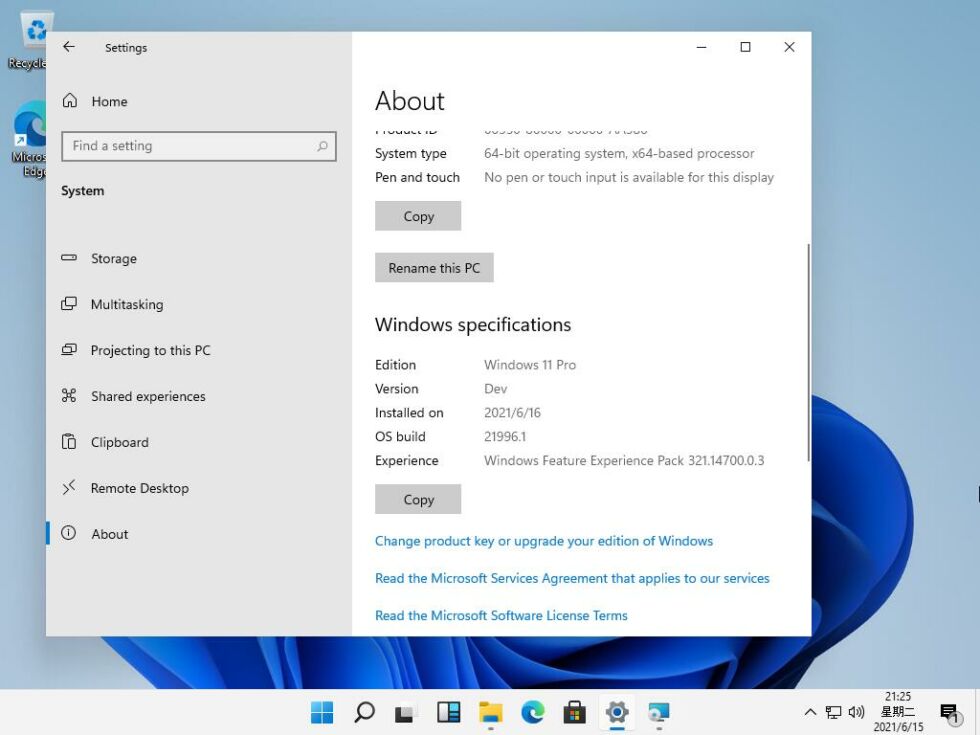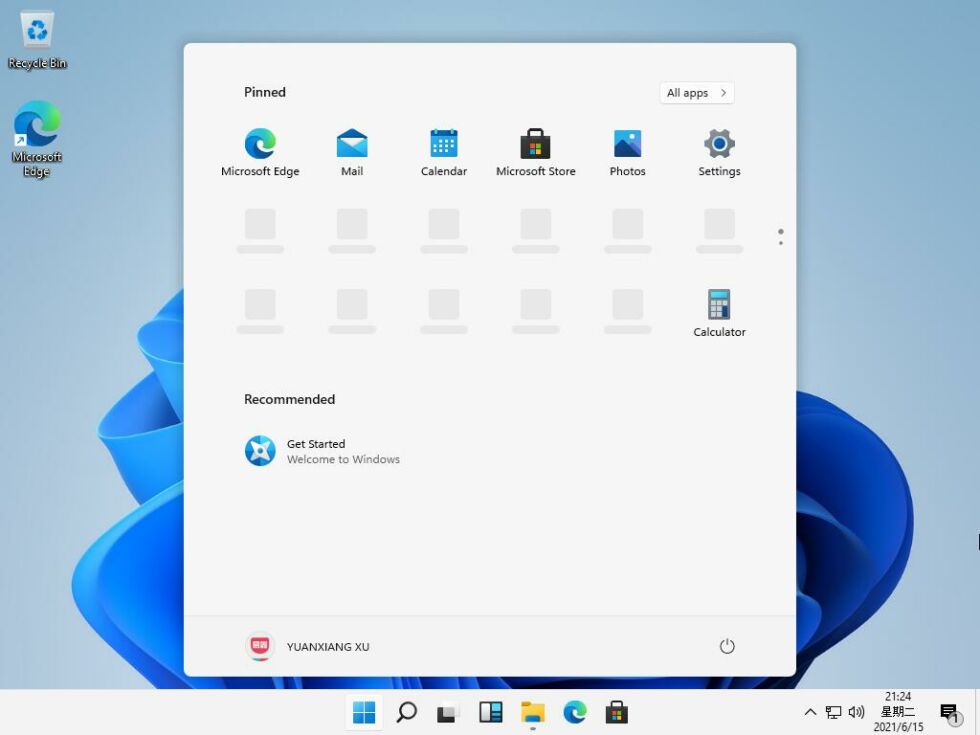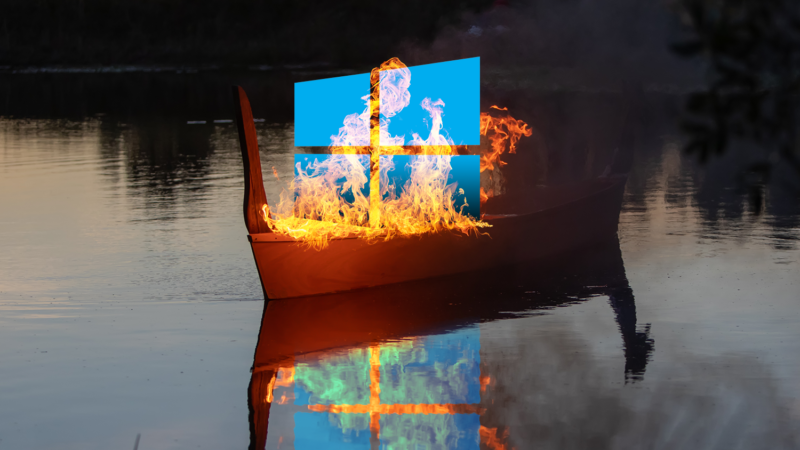Windows as a (discontinued) service —
Make way for Windows 11? Windows 10 end-of-life is October 2025
We'll find out more about Windows 10's replacement OS later this month.
A new Windows visual refresh, codenamed Sun Valley. is on the way this summer. Until recently, we've assumed that this update would simply bring a new look for Windows 10 21H2—the major release of Windows 10 in the second half of 2021—but new information in the form of end-of-life (EOL) dates for Windows 10 and a leaked screenshot of something purporting to be "Windows 11 Pro" heavily imply that serious changes are on the way.
Windows 10 EOL in 2025
Rumors of Sun Valley being "Windows 11" have been circulating for months, but until recently, we didn't put much stock in them. Windows 10 was intended to be Windows as a Service—a radical departure from the prior era of new, major Windows releases every three years or so. It seemed likely that Sun Valley's "sweeping visual rejuvenation" would result in Windows 10 21H2 looking very different from Windows 10 21H1. Why fix what's not broken?
The first strong indication that bigger things may be coming landed last week from a Microsoft-published EOL notice for Windows 10. "Windows 10 Home and Pro"—no code names, no minor version numbers—is now listed as retiring on October 14, 2025. "Retiring" is a part of the Modern Lifecycle Policy and means that the retired product leaves support entirely; this does not follow the old Fixed Lifecycle Policy with "mainstream" and "extended" support. Retired is retired—hit the pasture.
As Windows Central points out, the retirement date isn't entirely a new phenomenon. Microsoft initially launched the operating system with "mainstream support" through October 2020 and "extended support" through October 2025, the same five- to 10-year-support period it provides for server and enterprise operating systems. What has changed is the way Microsoft talks about that end of support. There was no retirement date for Windows 10 as a whole shown on the home-and-pro life cycle page until recently.
There isn't any real question about the end of life at this point; Microsoft has published it, and we have no reason to think it won't happen. The interesting questions revolve around what comes next and when it will happen.
Windows 11 in 2021?

This leaked "About this PC" screenshot from Betaworld on Baidu shows the OS version as "Windows 11 Pro."

The start menu in the leaked screenshots looks a lot like Windows 10X: spawned center screen, with a Mac-like slew of icons.
We've been seeing rumors about Sun Valley being a new Windows 11 for a few months, and until Microsoft posted a fresh EOL for Windows 10, we were skeptical. Windows 10 has been touted as "Windows as a Service" with no real expiration date, and there was no real reason to expect anything different.
The end-of-life date for Windows 10 as an entire operating system changes that—and it's backed up by leaked screenshots of a Windows build claiming to be "Windows 11 Pro" that showed up today on Baidu. The new build is visually similar to the canceled Windows 10X, and its screenshots appear legitimate. (The Verge says it can "confirm they are genuine," with no details about how.)
What does a new version of Windows mean for me?
For now, it's unclear what a new "Windows 11" means for end-users—there are no guarantees that existing Windows 10 licenses will allow the use of Windows 11, let alone an in-place upgrade. We also have no concrete idea about when new releases of Windows 10 will cease, when the first Windows 11 will be available, or what costs will be.
We do have an educated guess or two, though. Microsoft's generous upgrade policies from Windows 7 to Windows 10 (you can still upgrade for free today!) strongly imply a similar policy for 11, which Microsoft will presumably be keen to get users on. We also don't expect under-the-hood changes as sweeping as the ones that took place between 7 and 10. In all likelihood, in-place upgrades will be available.
Also, the consumer support cycle for Windows 10 is short. For example, Windows 10 21H1—the most current build—is only supported through December 2022. That's a roughly 18-month lifecycle, and there are no extended support policies for consumer Windows anymore. When it leaves support, you're expected to upgrade to the next version if you want to continue getting support and bug fixes.
We may or may not see a Windows 10 21H2 or even a Windows 10 22H1. But we don't expect to get a new Windows 10 build past 2023 at the latest, since that would imply the need to support 10 past its October 2025 retirement date.
More details are on the way
If you find the lack of concrete detail here frustrating, you're not alone. Fortunately, the wait for more information won't be long—Microsoft's What's Next for Windows digital event is coming June 24, and we expect plenty of screenshots, news, and more detailed upgrade guidance at that time.
Make way for Windows 11? Windows 10 end-of-life is October 2025



3175x175(CURRENT).thumb.jpg.b05acc060982b36f5891ba728e6d953c.jpg)



Recommended Comments
There are no comments to display.
Join the conversation
You can post now and register later. If you have an account, sign in now to post with your account.
Note: Your post will require moderator approval before it will be visible.